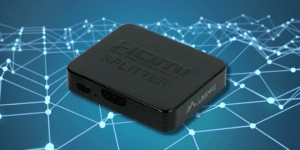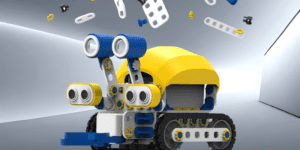Spis treści:
In popular science literature and in science-fiction movies from the past few decades, you have often heard terms such as artificial networks, neural networks, machine learning or at least the most popular one – artificial intelligence. Such similar terms are more and more often used in the real world as fundamental technical solutions that appear in applications such as image and human voice analysis and recognition systems.
The effect of many years of research and development in these matters are, for example, voice assistants, such as Amazon Alexa or Google Home. In this article, we describe artificial intelligence as an auxiliary tool in the electronics production process.
AI in a nutshell
Artificial Intelligence, known as AI for short, is a very broad field of science and technology, the goal of which is to create processes and objects with the ability to automatically analyze your own actions along with making the right decisions for the conditions under study. Classical artificial intelligence includes processes such as processing and translating natural language, receiving information from the environment, recognizing images and sounds, as well as taking appropriate actions and decisions. The development of artificial intelligence enabled the creation of Machine Learning technology. If you want to learn more about machine learning, check the wide offer of Botland Store, where you will find professionally designed machine learning courses in Python.
Machine Learning – the next stage in an Artificial Intelligence development
In the Machine Learning process, each application has its own blockchain. Each block performs a strictly defined function, e.g. detecting and classifying events, estimating errors and making individual decisions according to the given priority. The Machine Learning process is schematically very similar to the FFT (Fast Fourier Transform) algorithm, although significant differences result from the configuration of individual blocks of the flowchart. Such algorithms use a large number of samples. In Machine Learning technology, samples can be, for example, pictures of objects of the same type (e.g. Printed Circuit Boards) for which the Machine Learning algorithm is trained. Like any technology in the initial stage of development, Machine Learning also still requires many improvements.
The next stage of the development of Machine Learning Technology is deep learning, which works by using the deep logic layers created under artificial neural networks. For example this technology is used by Koh Young Technology Inc., a manufacturer of equipment designed for quality control of the electronics production process in real time. One of the most important criteria of this process is determining the correct positioning of electronic components on PCBs and control of solder paste dosing into the solder pads.


Three-dimensional data analysis in the process of automated electronics assembly
Koh Young Technologies testing machines measure the dimensional parameters of electronic components and soldered joints in real time. The measurement process also takes into account additional factors, such as the risk of deformation of the PCB surface and incorrect soldering connections. The use of artificial intelligence methods in supervising the electronics production process is inherent in expanding the capabilities of testing equipment. In this process, the examination of the correct placement of the components and the quality of their manufacture is based on the examination of the parameters of the light reflected from their surfaces towards the cameras. In developing this method, engineers at Koh Young Technologies faced the problem of light scattering that was not fully reflected back to the inspection camera, which contributed to falsifying the test measurements. Additionally, solving the problem is not facilitated by the increasing number of PCBs and the increase in the scale of integration, which reduces the distance between the elements. For this reason, designers from Koh Young Technologies used artificial intelligence as an element supporting the image analysis process, thus ensuring almost 100% effectiveness in eliminating measurement errors in real time. The enrichment of the mathematical modeling process with artificial intelligence is one of the most beneficial methods that allows you to quickly detect and eliminate errors with very good accuracy.
How useful was this post?
Click on a star to rate it!
Average rating 0 / 5. Vote count: 0
No votes so far! Be the first to rate this post.







